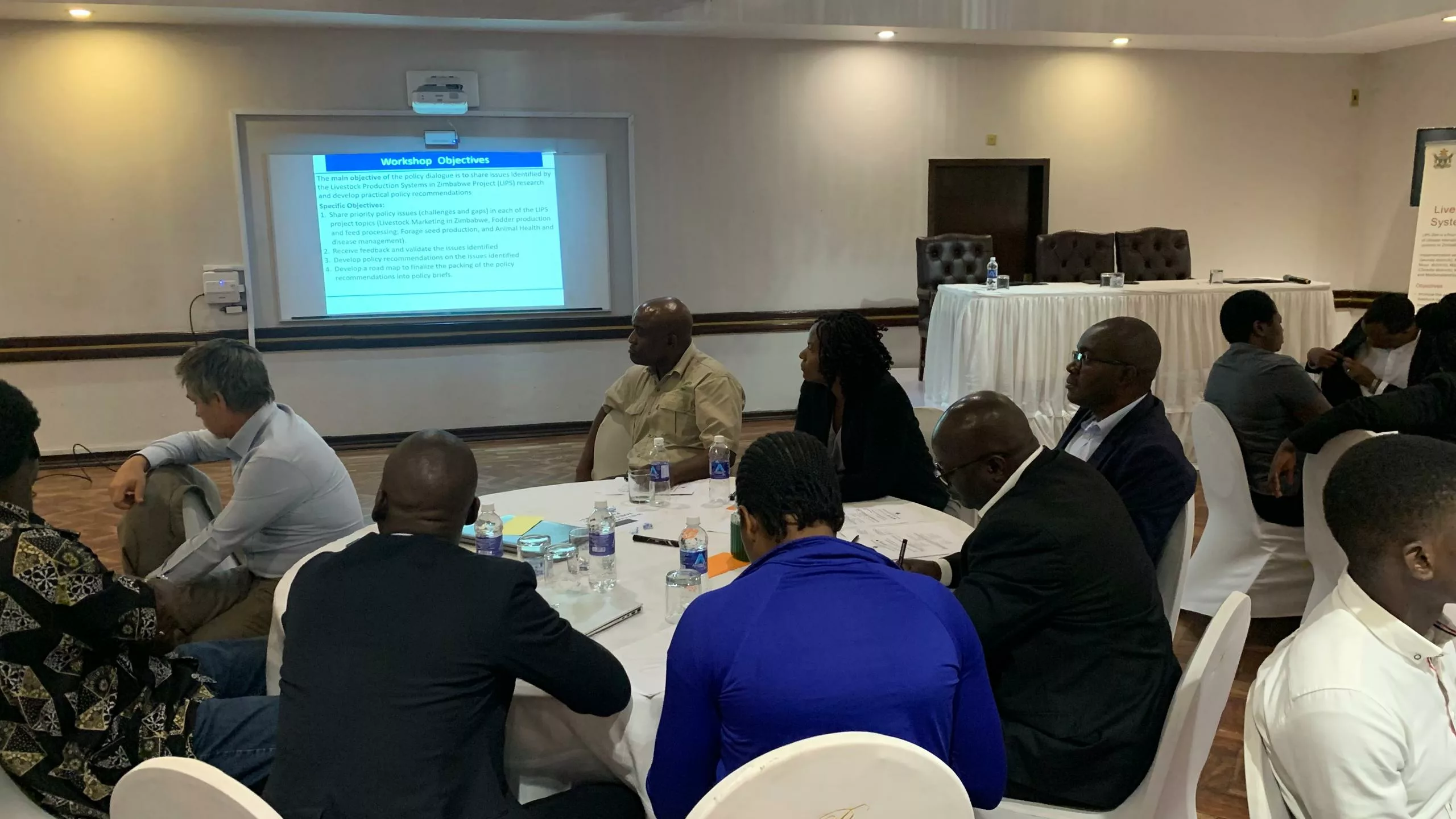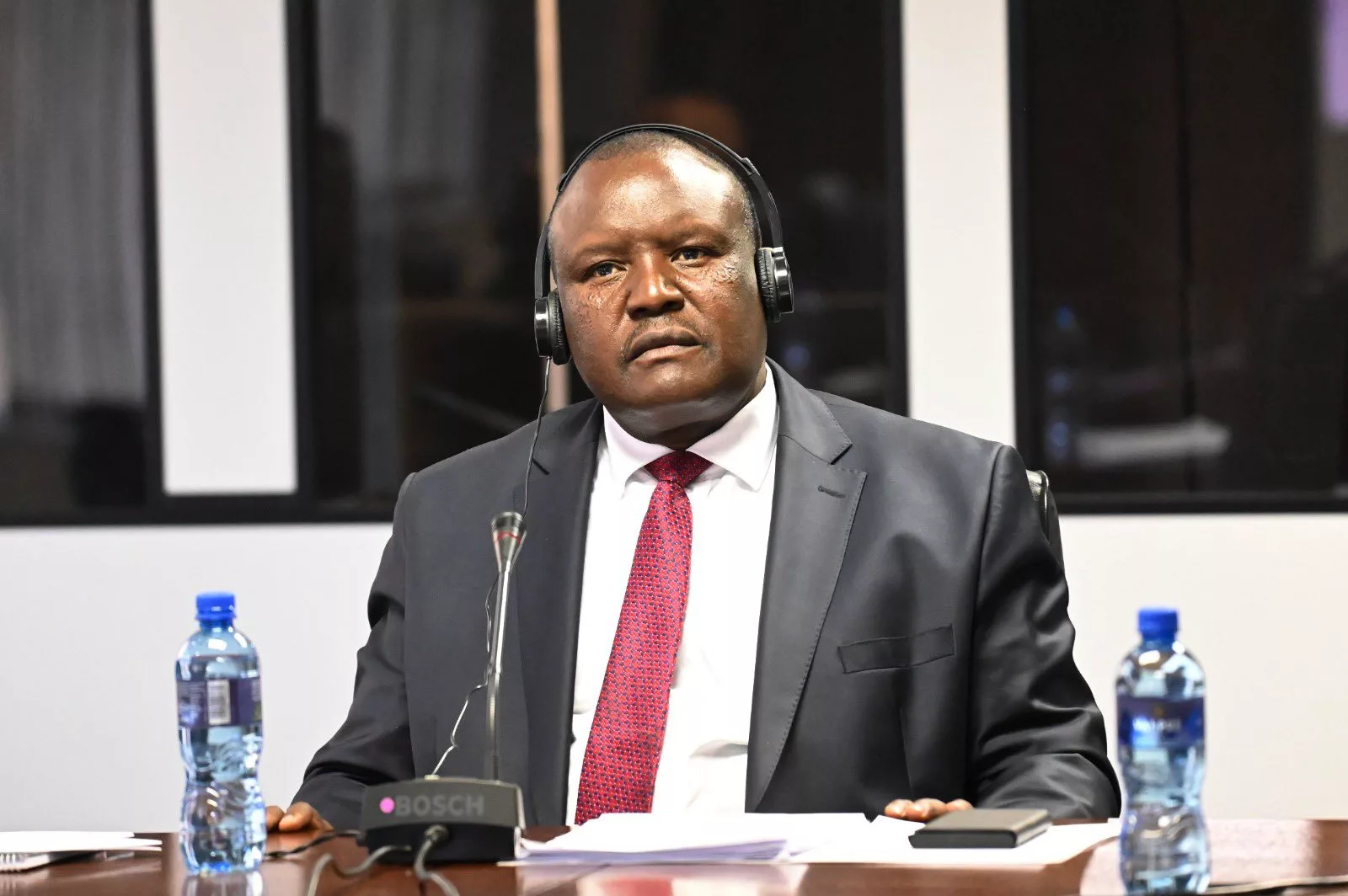|
Getting your Trinity Audio player ready...
|
Livestock farming is vital in Zimbabwe’s agricultural sector because it boosts the country’s economy, food security, and rural livelihoods. Farmers, agricultural service providers, and other actors in the livestock value chain rely on livestock for employment and revenue.
In a speech read on behalf of the Parliamentary Portfolio Committee chairperson in the Ministry of Lands, Agriculture, Fisheries, Water, and Rural Development, Honourable Felix Maburutse on the occasion of the Livestock Production Systems-Zimbabwe project (LIPS-Zim) policy dialogue at Rainbow Towers, Harare, on Tuesday 19 November 2024, by Mr. Wisdom Gunzvenzve, the Chief Livestock Officer in the Livestock Production and Development Department, he said the livestock sector is currently governed by the Livestock Growth Plan, which seeks to increase the National Herd and revenue generation from the livestock industry to US $1.9 billion annually.
“The European Union-funded LIPS-ZIM Project, which is part of the Government’s collaborative partnerships aligned to the Livestock Growth Plan, has identified the following as key to improved livestock production in the country: livestock marketing; fodder production and feed processing, as well as animal health and disease management.
“The El Nino-induced drought caused a loss of 9,941 cattle at the start of the 2023/24 season, and 47% of the rural wards faced a grazing shortage starting July 2024. Some 2,000,000 cattle faced risks of water and feed challenges. This high dependency of the livestock production system on natural resources such as communal grazing land makes our systems more vulnerable to the impact of climate change. While most smallholder farmers have embraced forage production, conservation, and feed formulation through mechanization, research in some districts has shown that arable land remains relatively low,” he said
Thus, the policy dialogue was a welcome initiative to improve forage banks, forage and livestock markets, and the grading system, especially for indigenous breeds. Policy recommendations on efficiency and transparent pricing of livestock and livestock products in the formal markets will encourage smallholder livestock farmers’ participation and improve income for livestock value chain farmers.
He said Zimbabwe has lost cattle at alarming rates due to the January disease; hence, there is a need to find sustainable, responsible, climate-smart ways of managing ticks, which are carriers of the disease.
In this regard, a policy review to support the inclusion of climate-smart Acaricide footbaths in the tick and tickborne disease integrated strategy will be welcome, considering its success in the control of ticks in the Lowveld. Further, legislation reviews around restrictions on livestock movement for diseases, stock theft, registration of outlets, and management of veld fires have become critical aspects of improving livestock productivity.
The project is running for a period of 60 months (January 2020- December 2024), targeting those districts lying in natural regions V and IV that include nine selected districts in 6 Provinces as follows: Manicaland (Buhera), Masvingo (Chiredzi), Matabeleland South (Beitbridge and Gwanda), Matabeleland North (Binga, Hwange and Nkayi), Midlands/Mashonaland West (Gokwe North-Nyaminyami confluence) and Mashonaland East (Mutoko)
“Ladies and gentlemen, I am most grateful to the European Union for financially supporting this €5 million project through a grant to the Government of Zimbabwe.
“Allow me to thank the consortium, led by the International Livestock Research Institute (ILRI), with other essential partners CIRAD, CIMMYT, and the University of Zimbabwe’s Faculty of Veterinary Sciences, for implementing the project on behalf of the Government of Zimbabwe, herein represented by my Ministry’s Department of Research and Specialist Services and Veterinary Services, with Agritex’s solid participation on the ground,” he added.
In its Vision 2030, the Government of Zimbabwe is targeting 1.8 million households to transition from subsistence to commercial farming, with 360,000 smallholder farmers becoming small-to-medium enterprises (SMEs).
One of the setbacks to this ambitious plan is that the average size of land allocated to cropping for each household and to common grazing is rapidly dwindling in most communal areas across Zimbabwe owing mainly to population growth. Therefore, crop and livestock production is depressed and livelihoods are becoming poorer with each progressive year. In the face of this challenge, livestock producers practicing mixed crop-livestock farming ought to adopt sustainable intensification practices to increase productivity, and food security and achieve better livelihoods through commercialization of livestock farming if they are to achieve middle-income status by 2030.
In addition, the country continues to suffer from unpredictable climate-related challenges which affect the availability of livestock feed resources during the wet and dry seasons and consequently growth of the livestock industry. The effects are even more adverse in agroecological III, IV, and V where smallholder farmers are supposedly more dependent on livestock farming. This causes alarm as more farmers in arid and semi-arid climates experience food insecurity and low incomes.
The Representative of the European Delegation in Zimbabwe, Ms Sara Piccoli, said the EU in the last five years has a big commitment to the livestock sector’s development.
“You all know, I think, the ZIGP project, the Zimbabwe Agricultural Growth Programme, that comes to an end also this year is an important research-focused strategy, central to that programme. The fodder production, seed forage production, livestock marketing, disease control, and management were key challenges in the project. In all the six value chains from pig to goat, all the different value chains were trying to address these big challenges. The research is bringing evidence and it’s fundamental also to discuss this,” she said.






